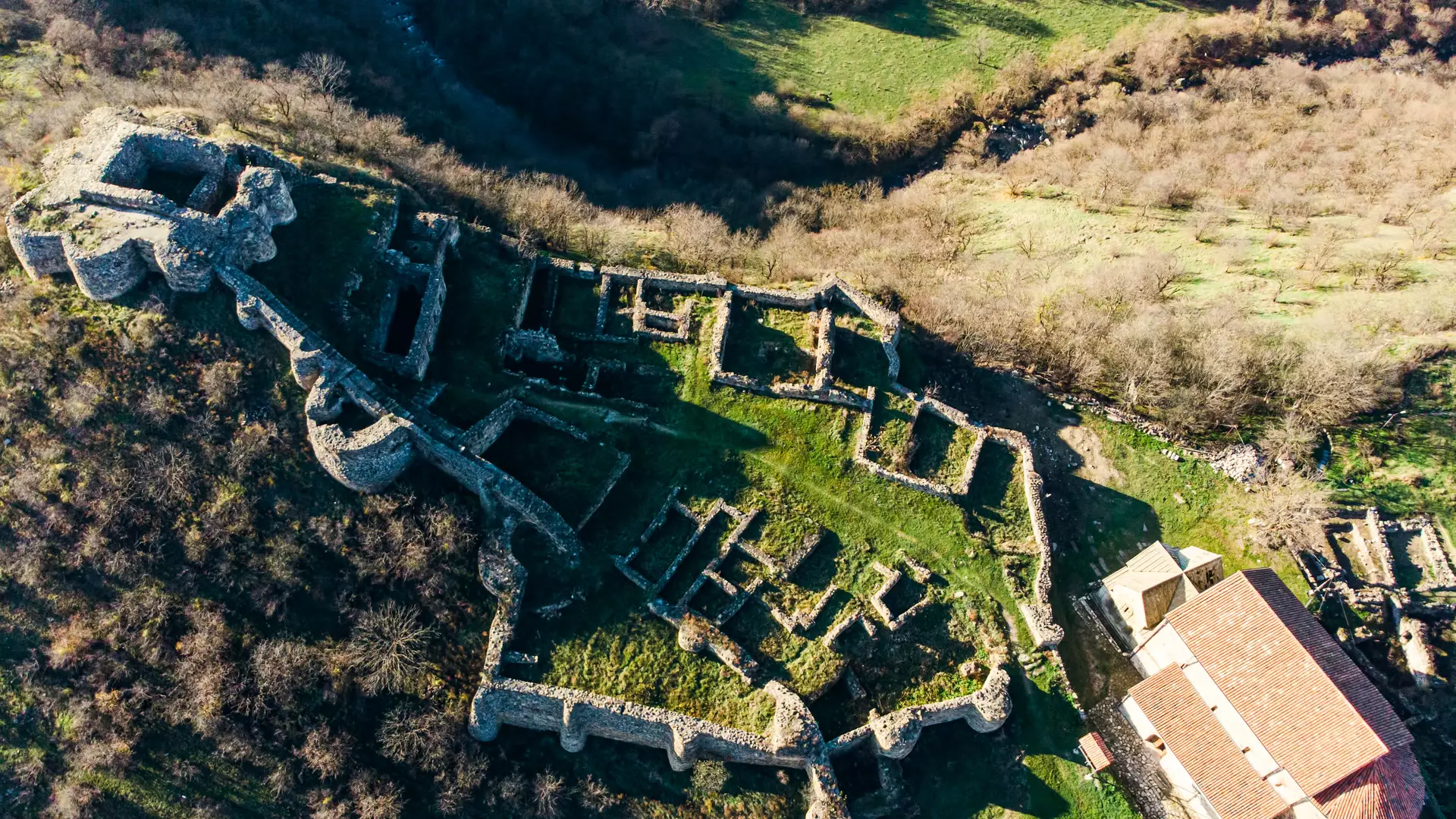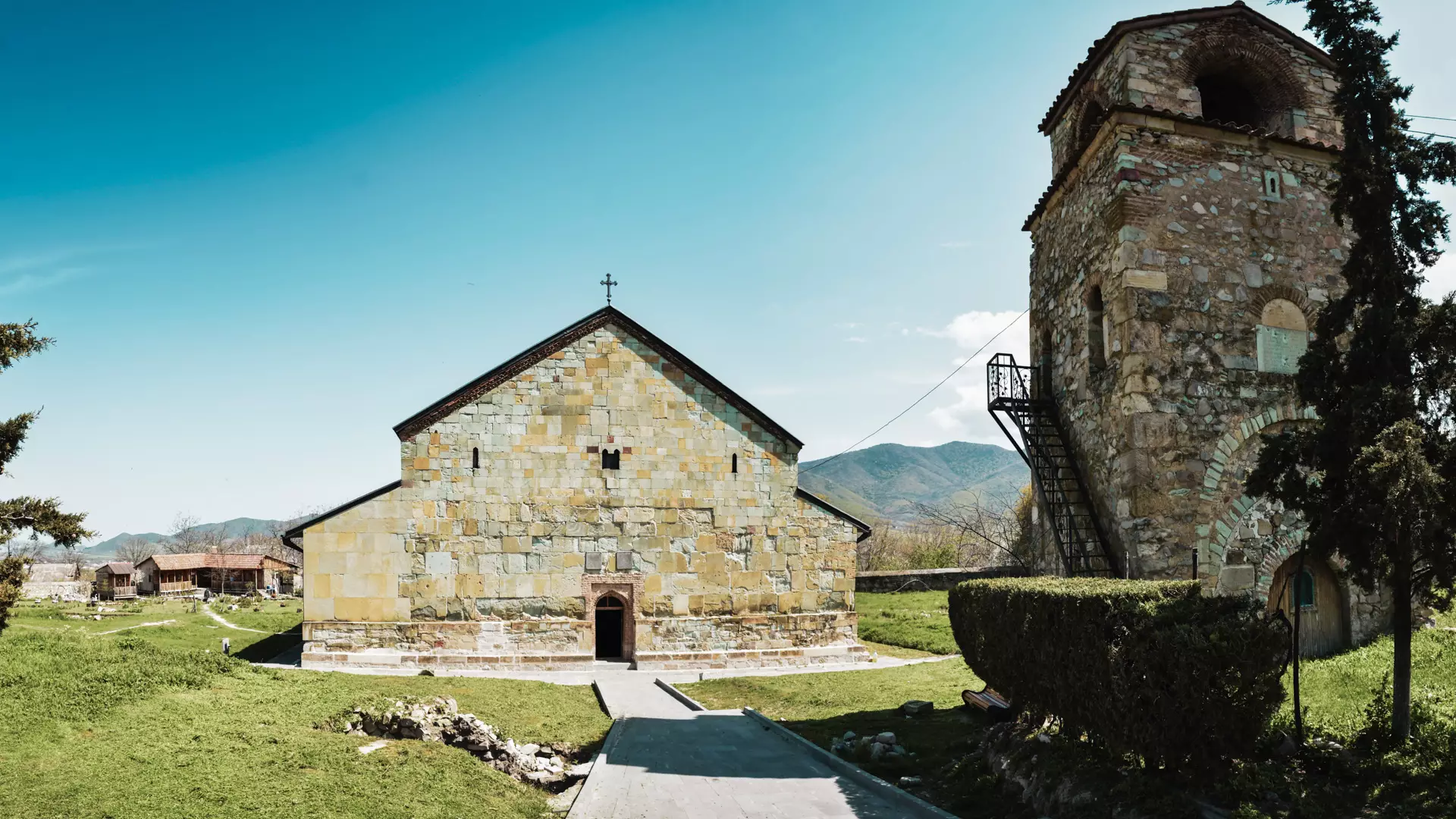Kvemo Kartli
The Sites in Kvemo Kartli
Kvemo Kartli is full of historic and cultural sites. The Dmanisi Settlement is especially interesting for history buffs. Bone fragments of 1.8-million-years-old hominids were found here, which added another link in the chain of human migration from Africa. On the way from Africa to Europe, the primeval humans (Homo erectus) settled on the territory of modern Georgia, and that is the reason to say that the first Europeans actually came from here.
Dmanisi and nearby Orozmani sites are still objects of research by the world’s scientists to this day.
Another interesting settlement from thousands of years ago is Samshvilde Fortress City, where the remains of military and religious buildings have been found.
In the Algeti River Valley, you find the ancient Birtvisi Fortress, a fortified structure atop a rocky, spired mountain, which was, at one time, considered impregnable. Besides it, the Kldekari Fortress and Khuluti Fortress are unique examples of medieval Georgian architecture.
The history of the German settlements in Kvemo Kartli has started from 1817, once the first colonists arrived in Georgia from Swabia. The majority of them settled in Kvemo Kartli and lived there for decades. The largest German settlement was Katarinenfeld, which is now Bolnisi. Still standing now are houses that were built using the German Fachwerk style.
Kvemo Kartli also has many churches and monasteries. The Bolnisi Sioni is quite a site as it’s one of the first basilicas in Georgia, dating back to the 5th century, where ancient Georgian inscriptions and a depiction of a Bolnisi Cross are preserved. Other outstanding sites include the Pitareti, Gudarekhi, Martkopi, Tserakvi and Manglisi Sioni monasteries.
For art and history lovers, visit the museums of local lore in Rustavi, Tetritskaro, Gardabani, as well as truly brilliant Bolnisi Museum and Dmanisi Archaeological Museum. Don’t skip the house museum of Sulkhan-Saba Orbeliani in Tandzia Village, honoring the 17th-century writer, educator, and one of the first Georgian diplomats.
Nature in Kvemo Kartli
Kvemo Kartli is also rich in natural monuments, with most located in Algeti National Park. You can also plan walking tours, hiking tours, or horseback rides on the eco-tourism routes that lead to several beautiful natural sites such as the Gardabani Managed Reserve, the colorful Mravaltskaro Desert, the Samshvilde Canyon, and more.
One amazing natural masterpiece is the Dashbashi Canyon, which is nestled in greenery and attracts numerous visitors with its beauty and charm. In addition, the Arjevani and Gomeri mountains are must-sees during any season.
And that is not all! From colorful waterfalls, captivating canyons, alpine meadows, polychromatic deserts, and beautiful lakes, Kvemo Kartli has numerous breathtaking natural wonders. Don’t miss the Algeti, Jandari, Pantiani, Kumisi, Tamarisi, and Bareti lakes as well. If you like fishing and watching migratory birds, then Kvemo Kartli should be a part of your journey to discover the best this region has to offer.
Cookie Policy



.webp)